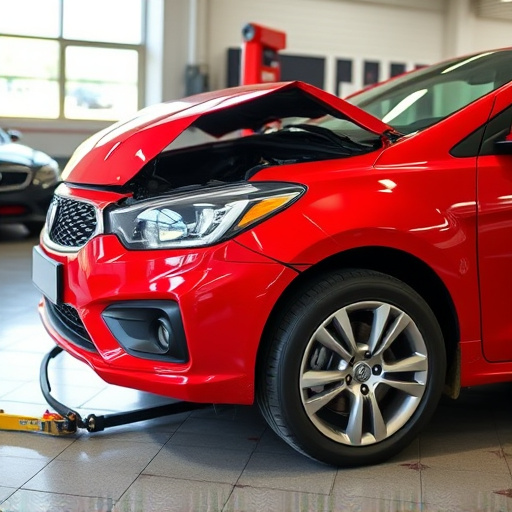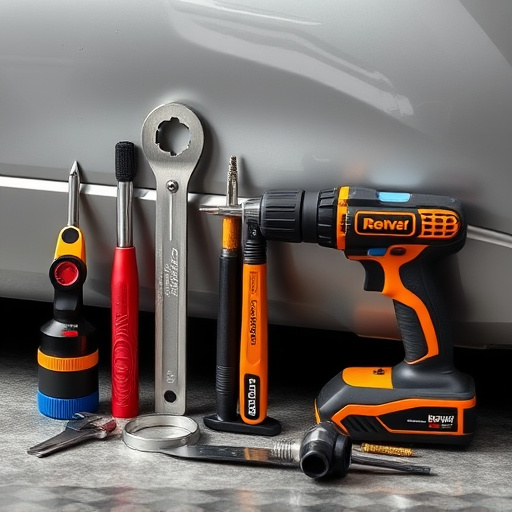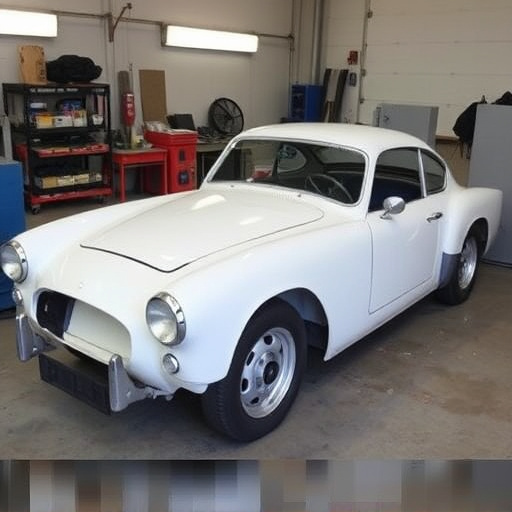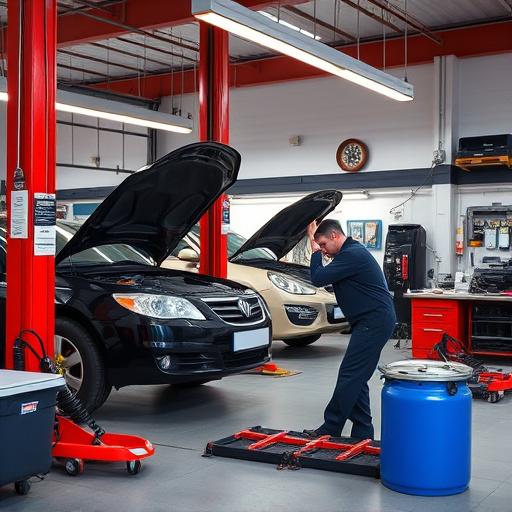Mercedes headlight adjustment is a critical safety feature controlling horizontal and vertical aiming for optimal light distribution, avoiding blinding other drivers, enhancing visibility, and minimizing light pollution. Regular maintenance and calibration are essential due to potential impacts from car repairs or replacements. Skilled technicians prioritize this process for restored Mercedes vehicles' safety and aesthetic appeal. Vertical aiming, crucial for night driving safety, controls headlight angle for effective road illumination. Routine checks during car maintenance visits at reputable body shops maintain safe lighting conditions.
Mercedes owners often wonder about the optimal way to adjust their headlights. This article delves into the intricate mechanics behind Mercedes headlight adjustment, focusing on both horizontal and vertical aiming. Understanding these adjustments is key to maximizing lighting performance while ensuring safety on the road. We’ll explore how horizontal alignment ensures an even beam distribution and vertical aiming plays a critical role in preventing blinding other drivers.
- Understanding Mercedes Headlight Adjustment Mechanics
- Horizontal Aiming: Aligning for Optimal Beam Distribution
- Vertical Aiming: Ensuring Safe and Effective Lighting
Understanding Mercedes Headlight Adjustment Mechanics

Understanding Mercedes Headlight Adjustment Mechanics
Mercedes headlight adjustment is a sophisticated process that ensures optimal lighting performance for safety and visibility. This mechanism involves both horizontal and vertical aiming components, allowing drivers to precisely position their headlights according to their vehicle’s movement and driving conditions. The horizontal adjustment controls the left-to-right aim of the headlights, ensuring they stay aligned with the road ahead. Meanwhile, the vertical adjustment fine-tunes the upward or downward angle, maximizing light distribution on the road surface without blinding oncoming drivers.
This meticulous system is integral to modern vehicle safety, enabling drivers to navigate curves, cross intersections, and encounter various weather conditions with clarity. Regular maintenance and calibration of these adjustments are crucial, as they can be affected by factors such as fender repair or car repair shop visits, ensuring the headlights function at their peak for both day-to-day driving and off-road adventures. Vehicle restoration specialists often pay close attention to these adjustments, as getting them just right enhances not only safety but also the overall aesthetic appeal of the restored vehicle.
Horizontal Aiming: Aligning for Optimal Beam Distribution

Mercedes headlight adjustment is a meticulous process that ensures not only optimal visibility but also safe driving conditions. A crucial aspect of this adjustment is horizontal aiming, which plays a pivotal role in achieving the right beam distribution. By precisely aligning the headlights horizontally, drivers can be confident that their lights reach far enough down the road to illuminate potential hazards without causing blinding effects to oncoming traffic. This meticulous tuning guarantees that each headlight projects its beam in the intended direction, enhancing overall driving safety and comfort, especially during night drives or in adverse weather conditions.
For luxury vehicle repair enthusiasts and collision center professionals, understanding Mercedes headlight adjustment is paramount. Accurate horizontal aiming not only improves the performance of the headlights but also contributes to the overall aesthetic appeal of the vehicle. This is particularly significant for high-end models where meticulous craftsmanship and precise details are integral to their reputation as status symbols. Efficient vehicle paint repair techniques, combined with careful headlight adjustment, can restore a luxury car’s original splendor, ensuring it stands out on the road while prioritizing safety at every turn.
Vertical Aiming: Ensuring Safe and Effective Lighting

Mercedes headlight adjustment is a critical aspect of vehicle maintenance that ensures both safety and optimal lighting performance. Vertical aiming plays a pivotal role in this process. It involves adjusting the upward or downward angle of the headlights to ensure they cast light effectively onto the road surface, enhancing visibility for drivers during nighttime driving. Inadequate vertical aiming can lead to blinding other drivers with excessive high beams or insufficient illumination on dark roads, increasing the risk of accidents.
Proper vertical aiming also contributes to preventing unwanted light pollution, ensuring that the headlights’ beam doesn’t encroach upon opposing lanes or residential areas. This is particularly important in urban settings where streetlights and nearby homes can be affected by poorly adjusted headlights. Regular checks and adjustments, often recommended during routine car maintenance visits at a reputable car body shop or collision repair service, are crucial to maintaining safe and effective lighting conditions for all road users, especially when navigating through challenging weather conditions or low-light situations.
Mercedes headlight adjustment is a meticulous process that combines both horizontal and vertical aiming, ensuring optimal beam distribution and safe driving conditions. By understanding the mechanics behind these adjustments, drivers can maintain their vehicles’ lighting systems effectively, enhancing visibility and road safety. This fine-tuning of Mercedes headlights is a crucial aspect of regular maintenance, allowing drivers to navigate various driving scenarios with confidence.














